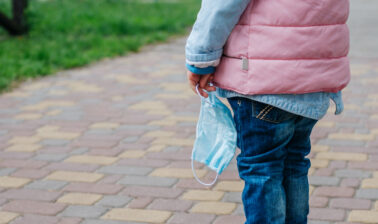Infographics
Helping Children Thrive: The COVID-19 Pandemic's Impact on Health and Well-being
Published on: September 14, 2020. Updated on: October 20, 2020.
About the Data Insights
The COVID-19 pandemic has exacerbated existing challenges facing children and families, including food and housing insecurity, access to education and poverty. While all children are facing adversity, the immediate and long-term impacts of this crisis have not been evenly distributed and may have substantial consequences for the most vulnerable children. This infographic explores the challenges facing children and families and provides actionable guidance to nurture resilience and support caregivers and parents.
Prevalence of mental health in children: Whitney DG, Peterson MD. US National and State-Level Prevalence of Mental Health Disorders and Disparities of Mental Health Care Use in Children. JAMA Pediatr. 2019;173(4):389–391. doi:10.1001/jamapediatrics.2018.5399
Impacts of pandemic worsen children’s mental health: TIME. The Coronavirus Seems to Spare Most Kids From Illness, but Its Effect on Their Mental Health Is Deepening. August 03, 2020.
Increase in children's poverty rates: Parolin, Z. & Wimer, C. Center on Poverty and Social Policy at Columbia University. Forecasting Estimates of Poverty during the COVID-19 Crisis: Poverty Rates in the United States Could Reach Highest Levels in Over 50 Years.
Lack of child care - job loss: Results from survey conducted by Northeastern University and shared by The Washington Post. Long, Heather. The Big Factor Holding Back the U.S. Economic Recovery: Child Care. July 03, 2020.
Lack of child care - closures: Bipartisan Policy Center. Nationwide Survey: Child Care in the Time of Coronavirus.
Education & the digital divide: Common Sense Media. K–12 Student Digital Divide Much Larger Than Previously Estimated and Affects Teachers, Too, New Analysis Shows.
Food Insecurity before COVID: Coleman‐Jensen, A., Rabbitt, M. P., Gregory, C. A., & Singh, A. (2019). Household food security in the United States in 2019, ERR‐270 U.S. Department of Agriculture, Economic Research Service.
COVID-19 Food Insecurity among Children: Schanzenbach, D. W., & A. Pitts. (2020). How much has food insecurity risen? Evidence from the Census Household Pulse Survey. Institute for Policy Research Rapid Research Report.
Housing Insecurity: National Alliance to End Homelessness. Children and Families.
Intimate partner violence: SAMHSA. Intimate Partner Violence and Child Abuse Considerations During COVID-19.
Rise in domestic violence during COVID-19: Ahmed, Robin Bleiweis and Osub. Ensuring Domestic Violence Survivors' Safety. Center for American Progress.
Child abuse reports: Schmidt, Samantha. The Centers Helping Child Abuse Victims Have Seen 40,000 Fewer Kids amid the Pandemic. The Washington Post. August 19. 2020.
4 pillars of emotion regulation: Tabor School of Business at Millikin University, HOME WELLNESS: COPE WITH COVID-19 STRESS
Create a self-care plan:
- Zero to Three, Young Children at Home during the COVID-19 Outbreak: The Importance of Self-Care
Address stress: UCSF Dept. of Psychiatry and Behavioral Sciences, Addressing Parenting Stress During COVID-19
Talk to children about the pandemic:
- Healthychildren.org, Parenting in a Pandemic: Tips to Keep the Calm at Home
- American Psychological Association, How to talk to children about difficult news
Moderate news & social media: Zero to Three, Young Children at Home during the COVID-19 Outbreak: The Importance of Self-Care
Consider mental health support or therapy: American Psychological Association, What Is Cognitive Behavioral Therapy?
Model and teach children healthy coping strategies: Healthychildren.org, Parenting in a Pandemic: Tips to Keep the Calm at Home
NIHCM webinar on early childhood development, ACEs and the COVID-19 pandemic
Center for the Developing Child, Harvard University
More Related Content
See More on: Coronavirus | Maternal and Child Health | Social Determinants of Health

